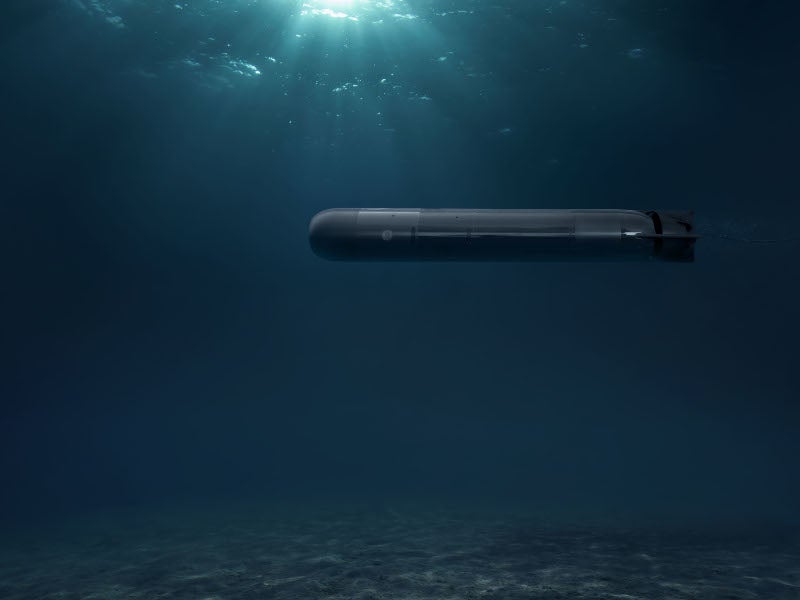Saab Lightweight Torpedo (SLWT) is a new anti-submarine warfare (ASW) solution being developed by Swedish defence company Saab.
The torpedo is designed to offer total control in the littoral underwater conditions and deeper seas. It will be an effective weapon to support naval missions in the Baltic Sea, which is considered one of the toughest marine environments in the world.
The new lightweight torpedo system is being pitched as a replacement for the Torpedo 45, which was launched by Saab in 1995.
SLWT is a flexible solution capable of being launched from multiple platforms such as fixed-wing aircraft, submarines, surface ships, and helicopters in support of anti-submarine and anti-surface warfare operations.
Saab lightweight torpedo development
Saab signed a Letter of Intent (LoI) with the Swedish Defence Material Administration (FMV) to provide support for the underwater capabilities of the Swedish Armed Forces for the period between 2015 and 2024 in June 2014. In May 2016, FMV placed an order for the development and production of a new lightweight torpedo under the terms of the LoI agreement.
The total estimated value of the order is Skr1.53bn ($183.16m). Saab is required to make deliveries between 2016 and 2024. The lightweight torpedo was demonstrated for the first time at the Undersea Defence Technology (UDT) exhibition held in Bremen, Germany, in May 2017.
In January 2018, Saab received an order for delivering the SLWT as part of the Finnish Navy’s Squadron 2000 mid-life upgrade (MLU) programme. The Finnish Navy’s upgraded Hamina-class vessels and Pohjanmaa-class corvettes will be integrated with the torpedo.
The maiden test firings of SLWT were conducted by Saab along with FMV and Swedish Armed Forces during February and March 2020. The torpedo was launched from a corvette and a submarine during the tests that were conducted at sea ranges on Sweden’s east coast in the Baltic Sea.
Saab lightweight torpedo design and features
The torpedo has a length of 2.85m, a diameter of 0.4m and weighs approximately 340kg. It can be operated in both shallow and blue water conditions.
Equipped with a fully digital homing system, SLWT has the ability to provide fire-and-forget and wire-guided capabilities. The torpedo will support manual navigation of narrow passages and sophisticated terrains. The wire-control system will ensure precision while also allowing operators to stop the attack. In the event of a wire break, it will have the capacity to continue its journey to the pre-determined target and kill it or abort and swim to the seabed.
The advanced design will allow the weapon to deliver effective performance in challenging hydroacoustic situations. The near-neutral buoyancy of the torpedo will ensure greater manoeuvrability and low speeds.
The active / passive acoustic homing system will be fitted to the torpedo for offering guidance capabilities. The forward-looking sonar and sonar electronics will provide the ability to detect, classify and track targets. The guidance technology will also allow users to attack targets located near friendly units.
Saab lightweight torpedo operational advantages
The wire-guidance and waypoint guidance capability enable the torpedo to navigate any obstacles with minimum undershoot.
The search pattern gets selected automatically and the target engagement can be called off when required. The weapon can ensure high accuracy by making renewed attempts until the target is engaged.
SLWT will offer mission evaluation capabilities and is also suitable for use in training exercises. Operators will be able to undertake evaluation, using the data recording feature, and recover the torpedo, using a flotation device.
Warhead and communications
SLWT’s warhead is insensitive munitions (IM)-compliant, omnidirectional plastic bonded explosive (PBX). The detachable warhead module can be switched with an exercise module to carry out learning exercises. The warhead will be activated by a multi-beam sonar proximity fuse. The final guidance system is optimised to vary the attack based on the type of the target. An on-board computer facilitates sensor data processing, vehicle control and supervision. Communications are carried out using galvanic wire or optic fibre during the entire course of the target engagement. A combination of bubble pulse oscillations and shock waves are generated to defeat the target.
Propulsion and performance
SLWT is powered by a lithium-based rechargeable battery and includes a ducted rotor / stator pumpjet for silent propulsion.
The propulsion system will allow the torpedo to move at a speed, ranging from less than 10k to more than 40k. It will have a maximum endurance of more than one hour for a distance of over 20km.
The torpedo will have the capability to reach depths of more than 300m.











